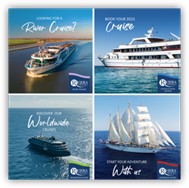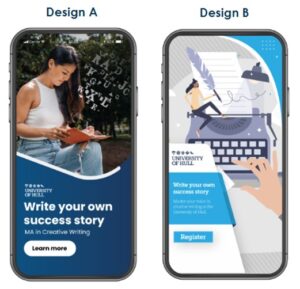
![]() Insights
Insights
No one wants to spend budget on advertisements that miss their target audience and don’t convert. The Programmatic and Paid Social bidding process gets ads in front of the right target audience at the best time. But how can digital advertisers ensure programmatic and paid social ads achieve conversions from their target audience? The answer is effective creative assets.
Many elements contribute to the effectiveness of ads, and regarding traditional advertising, Nielson shared how much vital elements contribute to sales:
As these figures highlight, creative assets account for 47% of sales contributions, demonstrating just how important good creative is to the effectiveness of traditional advertisements. But in a purely digital environment, this percentage skyrockets to 89%! This means you can expect worse results, of around 42%, from your Programmatic and Paid Social ads without good creative assets.

Regarding programmatic and paid social ads, creative refers to the chosen imagery advertisers display to their audience. Creative can include:


Although it is crucial for Programmatic and Paid Social advertisers to understand their target audience, they need to realise that creative assets may not translate from one ad platform to another. What resonates on Meta Reels probably won’t work on LinkedIn.
For example, according to app developers worldwide in the second quarter of 2022, when looking at the most effective digital ad formats for mobile app user acquisition, 51% of the most successful ads in this format were video – full-screen ads. These were over 30% more successful than display social ads on the same platform.
So, delivering the best creative assets on the right platform is integral to success. Factors like ad size, video vs. static imagery, and interactive features all play a part in creative best practice and can differ depending on the platform or placement on the page.
The assets we create for Paid Social can also be used across demand gen activities on PPC, allowing businesses to get more for their money. However, marketers need to know when it is appropriate to share creatives across platforms and when they need to be built from the ground up.



Producing effective ads, especially video, is integral to successful and strategic Programmatic and Paid Social campaigns. Meta says users spend 50% of their time using the Reels feature across Meta. Therefore, video ads are no longer a luxury companies can do without.
Marketers must continually update and refresh their ads to stay relevant to their audience and avoid ad fatigue.
Unfortunately, on its own, good creative does not necessarily translate to more conversions. There are no surefire, hard and fast best practices for creative that every company can follow. What resonates with one brand’s audience may fall flat with another. Data-driven creative testing is one of the best ways to determine the most significant impacts on performance and what resonates best with target audiences.
Creative testing helps the Programmatic and Paid Social team and our creative experts understand why ads are working well and why they may be falling short. The testing process begins with an initial discussion to outline the various aspects that will be tested, such as image copy, ad format, static vs. dynamic vs. video ads, etc. The Paid Social and Programmatic (PSP) team can report to the creative team on what has worked and what has not once the tests have concluded. The creative team can use these insights to influence future creative designs and improve performance.

Greg Gould, PSP Consultant at Search Laboratory, elaborated on the process further:
“When it comes to ad creation, the vital link that is often missing is how it connects back to the data. A pivotal part of our process is the PSP team providing feedback to our Creative team on the results. This collaboration provides a more strategic approach to ad creation and helps us understand what aspects of an ad are working to influence future designs and tests.”
One example of the different ads that can be run to test the audience’s response can be seen here:

Here, two ads are encouraging users to register for the Master’s in Creative Writing program at the University of Hull. Two different approaches are being tested, despite the common goal, and these include:
Again, this is a more than one-size-fits-all solution that will translate across clients. Even brands that operate in a similar industry may have different audiences that respond to different ads. The key is to stay up-to-date with what is working by continuing to carry out tests for every client. Having our Paid Media and Creative teams under one roof facilitates collaboration.
Reece Jones, Digital Creative Designer at Search Laboratory, had this to say about the process:
“I enjoy working on our mixture of Programmatic and Paid Social campaigns. It gives us the opportunity to work on different themes and styles, which expands our knowledge of what works and what doesn’t. We can test specific ads and quickly adapt to what is performing better, helping us create new successful designs.”
A recent example of data-driven testing that led to exciting findings was the Paid Social videos we created for our client Bonhams.
Although general “best practices” for Meta video say to keep videos as short as possible, as people’s attention spans tend to wane after ten seconds, the teams found through creative testing that longer videos (20-30 seconds) resonated more with Bonhams’ target audience.
The results of the tests found that 91% of people who viewed the 30-second video watched to the end, whereas for people who viewed the 10-second video, just 32% watched until the end. Therefore, despite best practices recommending shorter videos, testing revealed longer videos are more impactful for Bonhams’ audience.
Want to achieve success with creative-led ads?Contact us and our PSP experts can make it happen

![]() Insights
Insights

![]() Insights
Insights

![]() Insights
Insights